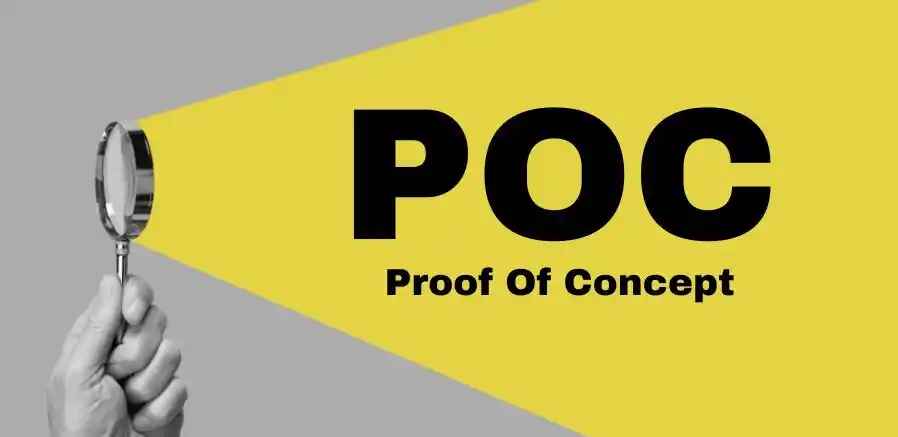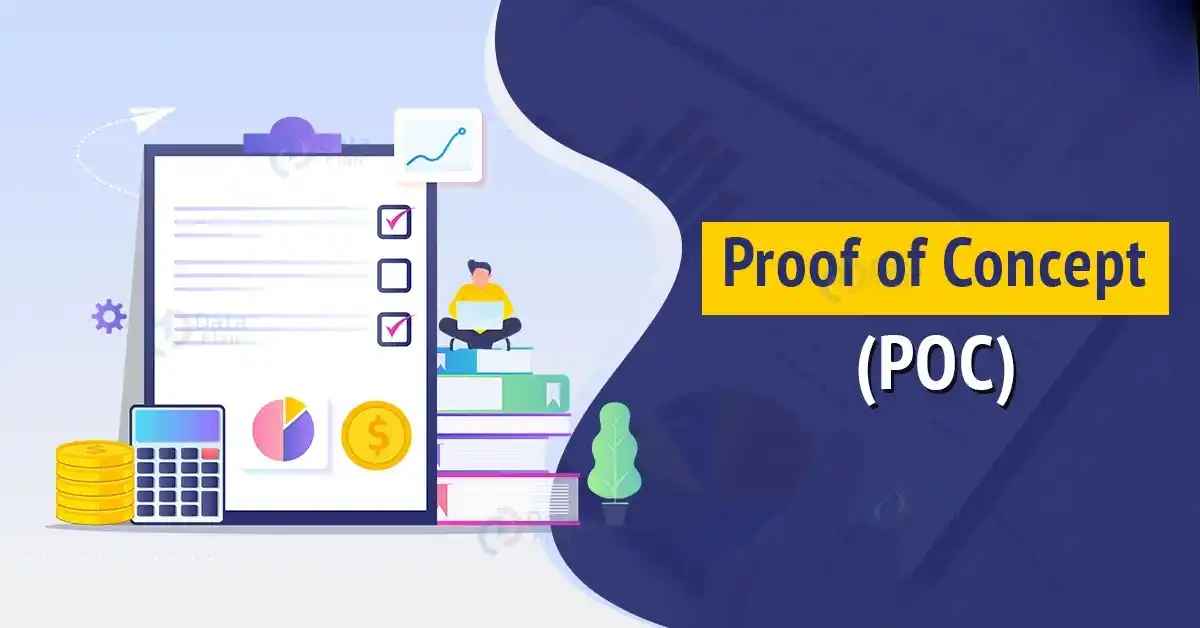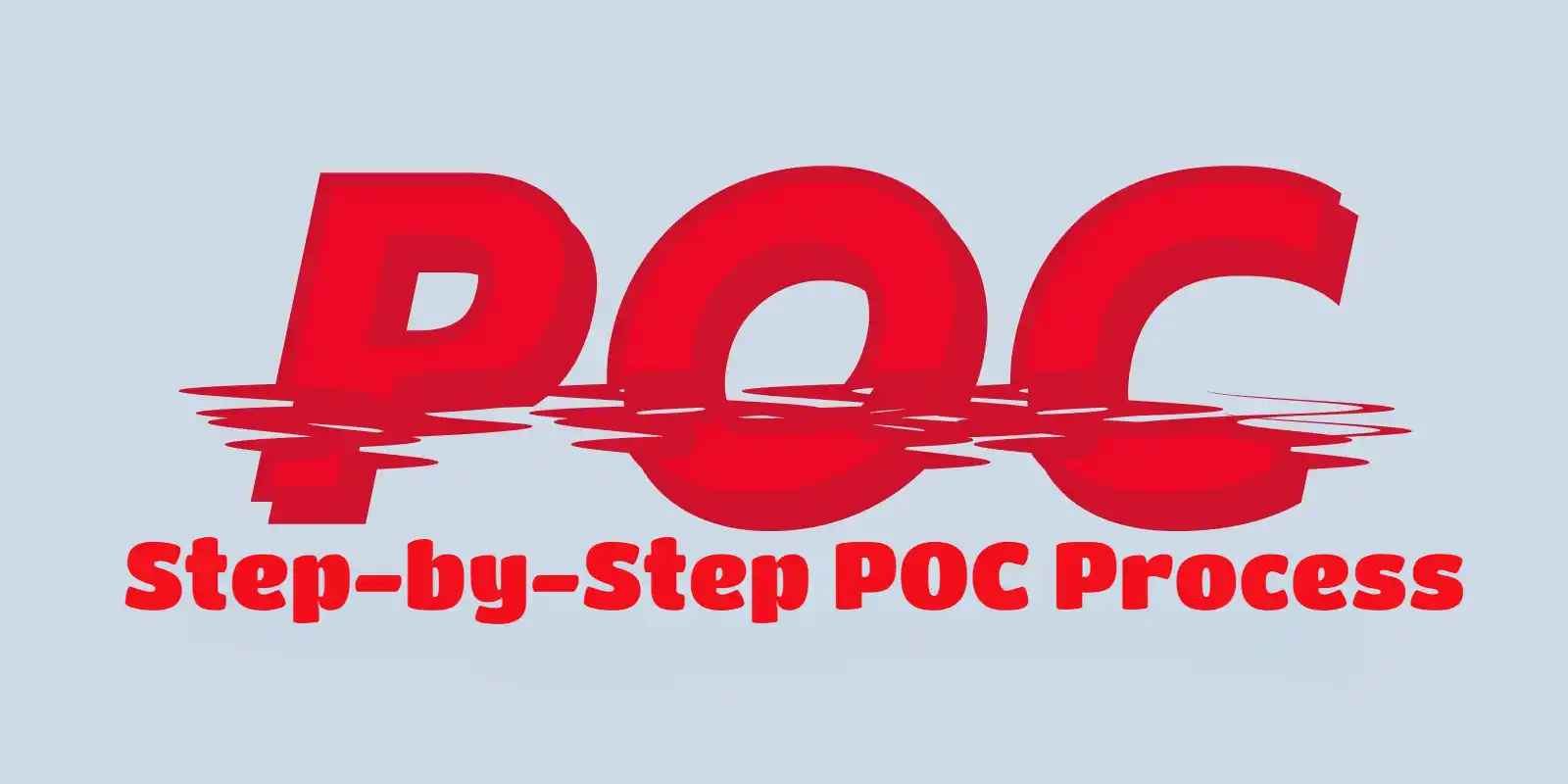Full Form of POC: Proof of Concept Explained in Detail
Updated on : 12 May 2025

Image Source: google.com
Table Of Contents
- 1. Introduction
- 2. What is POC? (Full Form and Definition)
- 3. Why is a POC Important?
- 4. Types of POC
- 5. Demo vs. POC: Key Differences
- 6. Step-by-Step POC Process
- 7. Benefits of a POC
- 8. Challenges and Limitations
- 9. Real-World POC Examples
- 10. POC in Different Industries
- 11. Best Practices for a Successful POC
- 12. FAQs
- 13. Conclusion
Table Of Contents
Introduction
In the world of innovation, startups, and enterprise technology, the term POC is everywhere. But what does it actually mean, and why is it so crucial for success? This guide unpacks everything you need to know about POC-from its full form to practical implementation.

Image Source: google.com
What is POC? (Full Form and Definition)
POC stands for Proof of Concept.
A Proof of Concept is a demonstration-often a small project, prototype, or experiment-designed to test whether an idea, technology, product, or business model is feasible and valuable in the real world. It helps validate assumptions before committing significant resources.
Web Development Services with Hexadecimal Software
Why is a POC Important?
- Validates technical or business feasibility
- Reduces risk before large investments
- Builds confidence with stakeholders and investors
- Uncovers potential issues early
- Enables faster go/no-go decisions

Need a powerful web app? Hexadecimal Software builds it to perform.
Types of POC
| Type | Description | Example Use Case |
|---|---|---|
| Technology POC | Tests if a new technology or software works as intended | AI integration in an app |
| Product POC | Tests the feasibility of a new product or feature | New wearable device prototype |
| Business POC | Validates a new business model or strategy | Switching to a subscription model |
| Marketing POC | Tests new marketing channels or campaigns before scaling | Pilot social media campaign |
Technology POC
- This type checks whether a new technology or software functions as expected.
- For example, integrating artificial intelligence (AI) into a mobile app to see if it enhances user experience.
Product POC
- It is used to test if a new product or feature is practical and can meet market needs.
- For instance, creating an early version of a wearable device to evaluate its usability and appeal.
Business POC
- This validates the feasibility of a new business model or strategic change.
- An example would be shifting a company's revenue model to a subscription-based service and testing its effectiveness.
Marketing POC
- It involves trying out new marketing approaches on a smaller scale before a full rollout.
- For example, launching a pilot campaign on social media to measure engagement and conversion.
You Might Also Like
Demo vs. POC: Key Differences
| Feature | Demo | Proof of Concept (POC) |
|---|---|---|
| Purpose | Showcase features | Test feasibility and real-world viability |
| Scope | Predefined, limited | Customizable, focused on solving real problems |
| Outcome | Visual impression | Data-driven validation or rejection |
| Audience | Potential clients | Stakeholders, decision-makers |
A demo is a quick illustration, while a POC is a rigorous validation process.
Purpose
- A showcase is meant to highlight features and give a visual or interactive impression, often to impress or attract potential clients.
- In contrast, a POC (Proof of Concept) focuses on testing the feasibility and practicality of an idea in a real-world setting.
Scope
- Showcases typically have a predefined, limited scope designed to present what already works.
- A POC, however, has a more customizable scope that targets solving specific problems or proving certain concepts.
Outcome
- The goal of a showcase is to leave a strong visual impression, while a POC aims to provide data-driven insights to either validate or reject an idea based on performance or feasibility.
Audience
- Showcases are often aimed at potential clients or users to generate interest or feedback.
- POCs are primarily for internal stakeholders and decision-makers who need evidence before investing further.
Step-by-Step POC Process

Image Source: google.com
- Define the Idea and Objectives
Clarify what you want to achieve and the problem you’re solving. - Identify Stakeholders and Team
Assemble the right people for input and execution. - Set Success Criteria
Decide how you’ll measure if the POC is successful. - Develop the POC
Build a minimal version or run an experiment. - Test and Collect Data
Run the POC, gather feedback, and document results. - Evaluate Outcomes
Compare results against success criteria and decide next steps.
Frontend Development Services with Hexadecimal Software
Benefits of a POC
| Benefit | Description |
|---|---|
| Cost-effective Validation | Test ideas cheaply and quickly before large investments |
| Investor Confidence | Tangible results help secure buy-in from stakeholders and investors |
| Risk Mitigation | Identify and address potential issues early |
| Predicting Problems | Uncover technical or business limitations before full-scale development |
| Accelerated Time to Market | Move faster by validating concepts early |
| Focused Resource Allocation | Invest only in ideas with proven potential |

Need help validating your next big idea? Our experts can guide your POC journey.
Challenges and Limitations
| Challenge | Description |
|---|---|
| Misrepresentation | POC results may not reflect full-scale complexity |
| Confirmation Bias | Stakeholders may ignore negative data |
| Limited Scope | May overlook broader business or technical challenges |
| Resource Constraints | Even small POCs require time and effort |
Misrepresentation
- A POC might not fully capture the complexity of a full-scale implementation.
- What works in a small, controlled test may fail under real-world conditions, leading to false confidence.
Confirmation Bias
- Stakeholders may focus only on positive outcomes and ignore signs that the concept may not work effectively, skewing decision-making.
Limited Scope
- Since POCs are designed to test specific aspects, they might miss broader technical or business challenges that could arise later in full deployment.
Resource Constraints
- Even though POCs are small-scale, they still require time, expertise, and effort—resources that could be stretched thin, especially in smaller teams or startups.
Real-World POC Examples
- Tech Startup: Launches a basic version of an app to test user interest before full development.
- Healthcare: Tests AI algorithms on a small dataset to validate diagnostic accuracy.
- Manufacturing: Pilots a new process on one production line to assess efficiency gains.
POC in Different Industries

Image Source: google.com
| Industry | Typical POC Use Case |
|---|---|
| IT/Software | New platform or feature validation |
| Healthcare | Medical device or AI diagnostic tool feasibility |
| Finance | Testing blockchain or automation solutions |
| Manufacturing | Process automation or robotics pilots |
| Marketing | New campaign or channel testing |
IT/Software
- In the tech world, a POC is often used to validate a new platform, feature, or integration.
- For example, testing a new software module to ensure it works with existing systems.
Healthcare
- POCs in healthcare focus on the feasibility of medical innovations, like AI-powered diagnostic tools or new medical devices, to determine their reliability and compliance with regulations.
Finance
- Financial institutions use POCs to explore technologies like blockchain or automation.
- A typical example would be testing a smart contract solution for secure, automated transactions.
Manufacturing
- POCs here often involve piloting process automation or robotics to assess efficiency gains, cost-effectiveness, and impact on production workflows.
Marketing
- Marketers use POCs to test new campaigns, messaging, or advertising channels on a small scale to gauge effectiveness before a full rollout.
Backend Development Services with Hexadecimal Software
Best Practices for a Successful POC
- Gather Feedback Early: Use input from real users and stakeholders to refine your concept.
- Be Flexible: Adjust goals and methods as you learn.
- Define Clear Success Metrics: Know exactly how you’ll measure success.
- Document Everything: Track results, feedback, and lessons learned.
- Iterate Quickly: Use rapid cycles to refine and improve.
FAQs
Q: How long does a POC take?
A: Typically, a few days to a few weeks, depending on complexity.
Q: Is a POC the same as a prototype?
A: No. A POC tests feasibility, while a prototype demonstrates functionality or design.
Q: Who should be involved in a POC?
A: Key stakeholders, technical experts, and potential end-users.
Q: Who typically creates a POC?
A: Developers, engineers, or project teams create a POC to test technical or business concepts.
Q: How long does a POC take?
A: It varies, but most POCs are completed in a short time frame, ranging from a few days to a few weeks.
Q: Why is a POC important?
A: It helps avoid costly mistakes by confirming whether a project is viable before investing time and resources.
Get in touch with Hexadecimal Software to explore our POC services.
Hexadecimal Software helps validate your ideas through tailored Proof of Concept (POC) solutions. We assess feasibility, reduce risks, and provide data-driven insights to guide full-scale development.
Conclusion
A Proof of Concept (POC) is a powerful tool for innovators and businesses to validate ideas, minimize risk, and build confidence before large-scale investment. By understanding its process, benefits, and challenges, you can use POCs to drive smarter decisions and successful innovation.
A POC is not just a checkbox-it’s your first real test of whether your idea can succeed in the wild.





